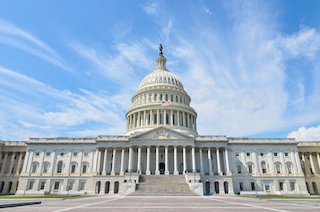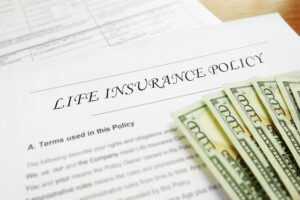The U.S. House of Representatives is expected to pass the SECURE Act 2.0 on Tuesday, building on the 2019 SECURE Act with a number of enhancements intended to help Americans save for a secure retirement.
H.R. 2954, the “Securing a Strong Retirement Act of 2022” (also known as SECURE 2.0), would increase retirement savings through automatic enrollment, new incentives, and expanded coverage.
“Building on their bipartisan SECURE Act from 2019, Chairman Neal and Members of the Ways and Means Committee marked up H.R. 2954, the Securing a Strong Retirement Act, last year, and it includes bipartisan provisions from bills introduced by many of our members,” said a memo from House Majority Leader Steny Hoyer, D-Md., provided by the Insured Retirement Institute. “By expanding automatic enrollment in employer-provided retirement plans, simplifying rules for small businesses, and helping those near retirement save more for longer, this legislation will help increase Americans’ access to retirement funds and help families save for the future.”
Per a one-page fact sheet from the Committee on Ways and Means, the bipartisan SECURE 2.0’s proposals include:
- Promoting saving for retirement earlier by expanding automatic enrollment in 401(k) and 403(b) retirement plans.
- Creates a new financial incentive for small businesses to offer retirement plans.
- Increases and modernizes the existing federal tax credit for contributions to a retirement plan or IRA (the Saver’s Credit).
- Allows Americans to save for retirement longer by increasing the required minimum distribution (RMD) age to 75.
- Makes it easier for military spouses to save for retirement by offering small employers a new financial incentive that boosts retirement plan participation by making military spouses eligible for plan participation quicker, increasing eligibility of matching or nonelective contributions, and making military spouses 100% vested in all employer contributions.
- Improves coverage for part-time workers in 401(k) plans.
SECURE 2.0 would encourage more flexibility for Americans’ retirement options. It expands retirement savings options for non-profit employees by allowing groups of non-profits to join together to offer retirement plans to their employees.
It also offers individuals 50 and older the ability to set aside greater savings as they approach retirement.
Among other things, it would permit individuals the choice to pay down a student loan instead of contributing to a 401(k) plan, while still promoting increased retirement savings through an employer match in their retirement plan.
The wide-ranging retirement reform bill would also:
- Increase charitable donations permitted through an individual’s IRA
- Safeguard innocent retirees who unknowingly receive retirement plan overpayments
- Creates a national online searchable Retirement Savings Lost & Found Database at the Department of Labor for workers and retirees to find their lost retirement accounts.
SECURE 2.0 has broad support from outside stakeholders, from AARP, to Edward Jones, to the American Red Cross.














Reminds me the changes done in 1983……………………
Still want to see an HSA type savings option for those on high deductible Medicare Supplements.
All the whoop te do about enabling people to save longer, but that particular option seems to continue to be missed.
Increasing RMD to 75 is a tax grab planning strategy by govt. They know that seniors, especially those over age 65 are in the lowest tax brackets & most pay little or no federal income taxes.
Raising RMD age just assures the balance is higher at death. Beneficiaries receiving lump sum or even 10 year deferral will pay much higher taxes than the senior would have gradually taking money out. Most over age 65 should still run their tax numbers each year. most would be better off taking money out or partial Roth conversions between age 62-75 when no longer working rather than not taking anything out until age 75. Take it out in low or 0% tax bracket & reinvest in identical investment. Or convert each year to Roth once retired rather than wait until age 75